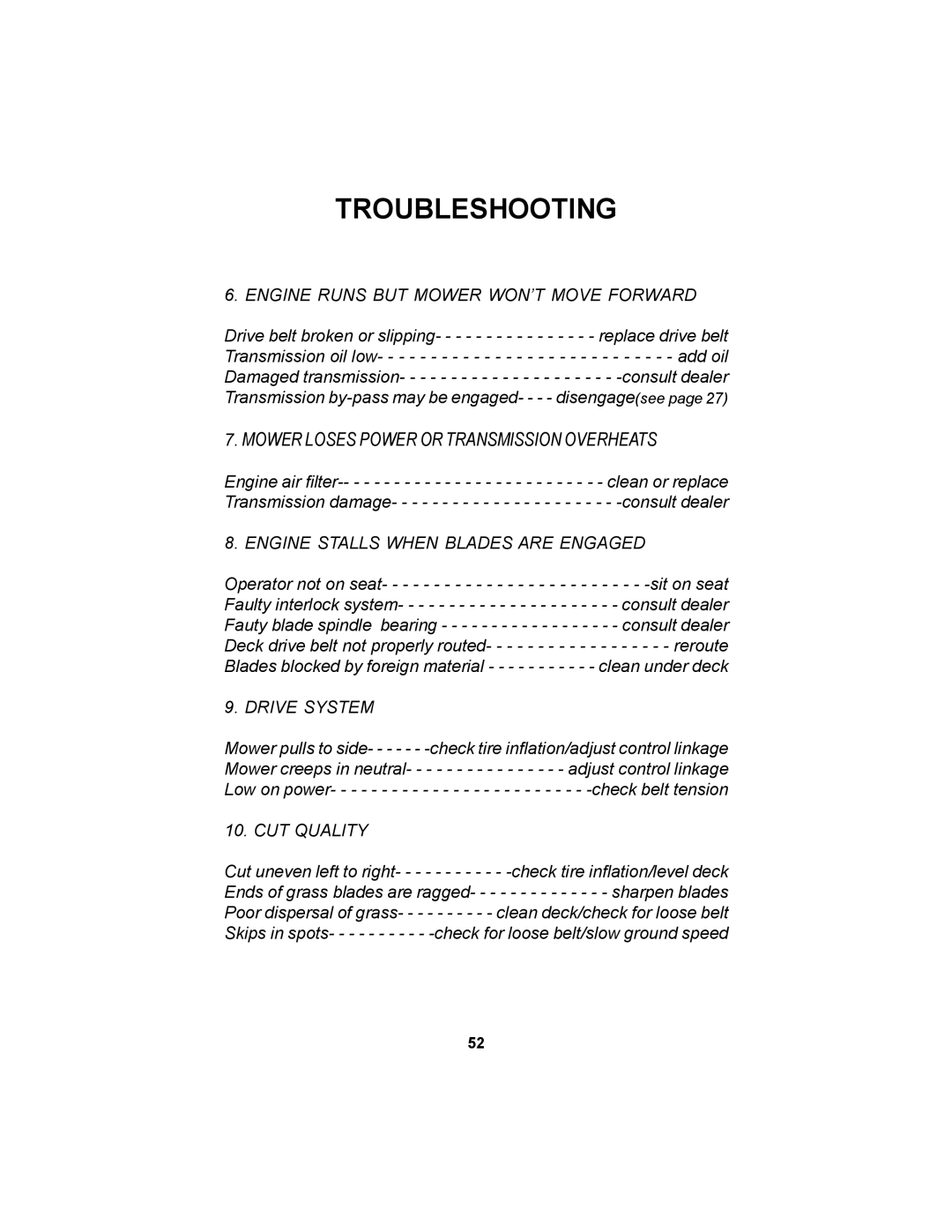17823-106 specifications
The Dixon 17823-106 is a versatile and robust product designed to meet the demands of modern applications. This innovative piece of equipment is particularly known for its reliability, ease of use, and advanced technology, making it an ideal choice for professionals across various industries.One of the main features of the Dixon 17823-106 is its construction. Crafted from high-quality materials, this product ensures durability and longevity even in challenging environments. The rugged design is resistant to wear and tear, which is essential for maintaining operational efficiency in demanding settings, such as construction sites or industrial facilities.
A standout characteristic of the Dixon 17823-106 is its user-friendly interface. The product is designed for simplicity, enabling users to quickly learn and operate it without extensive training. This ease of use not only enhances productivity but also ensures safety by minimizing the potential for user error. With its intuitive controls and clear display, users can monitor performance and make adjustments on the fly, facilitating a smoother workflow.
In terms of technology, the Dixon 17823-106 incorporates advanced features that set it apart from competitors. The product is equipped with precision engineering that allows for enhanced performance, ensuring consistent output. Additionally, it may include smart connectivity options, enabling integration with other devices or systems for improved data analysis and operational oversight.
Another key feature is its adaptability. The Dixon 17823-106 is built to accommodate a range of applications, making it suitable for various sectors such as agriculture, manufacturing, and logistics. This versatility ensures that it can meet diverse customer needs without requiring additional modifications or accessories.
Moreover, the Dixon 17823-106 is engineered with safety in mind. Equipped with multiple safety features, it reduces the risk of accidents and promotes secure operation. This commitment to safety is vital, particularly in environments where equipment is used continuously and by different operators.
In conclusion, the Dixon 17823-106 is a highly efficient and dependable product that combines durability, user-friendliness, advanced technology, adaptability, and safety. These main features make it a valuable asset for any professional looking to enhance their operational capabilities while minimizing downtime and maximizing productivity.
